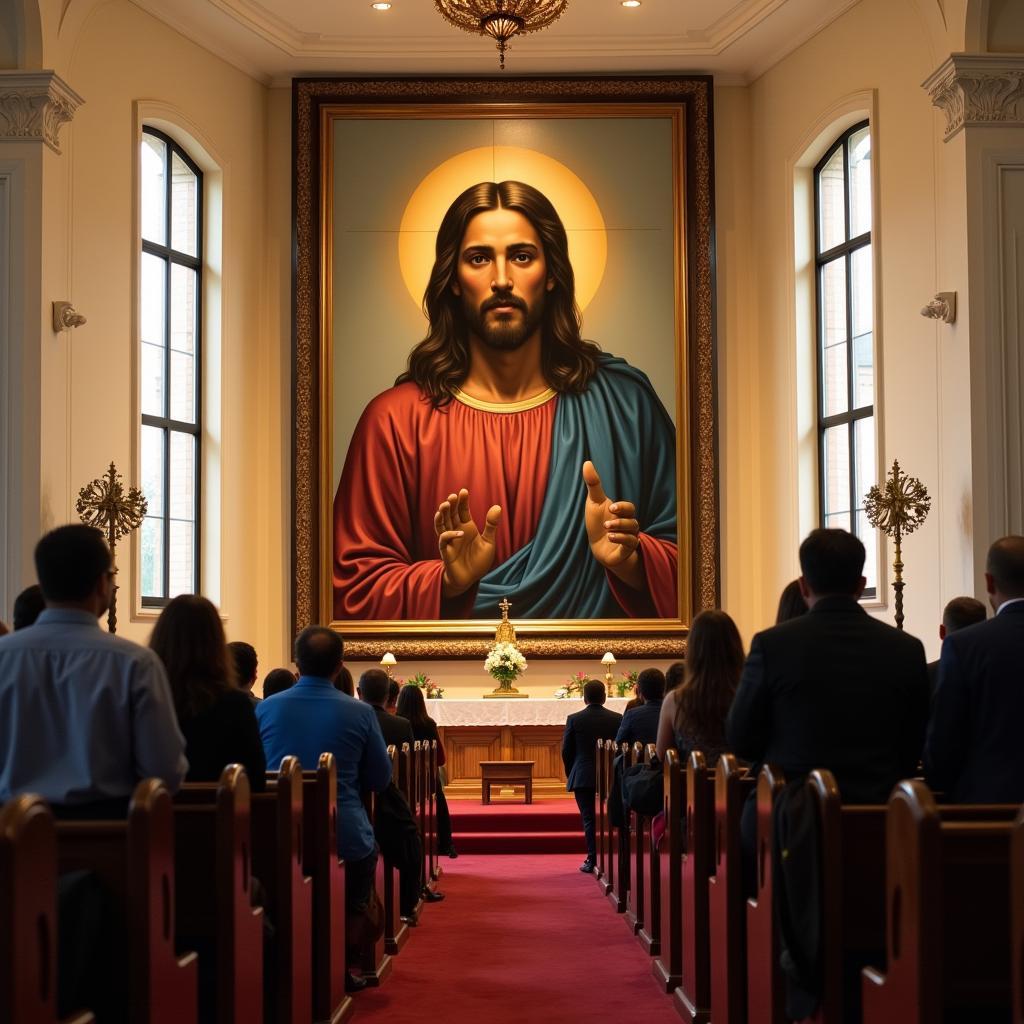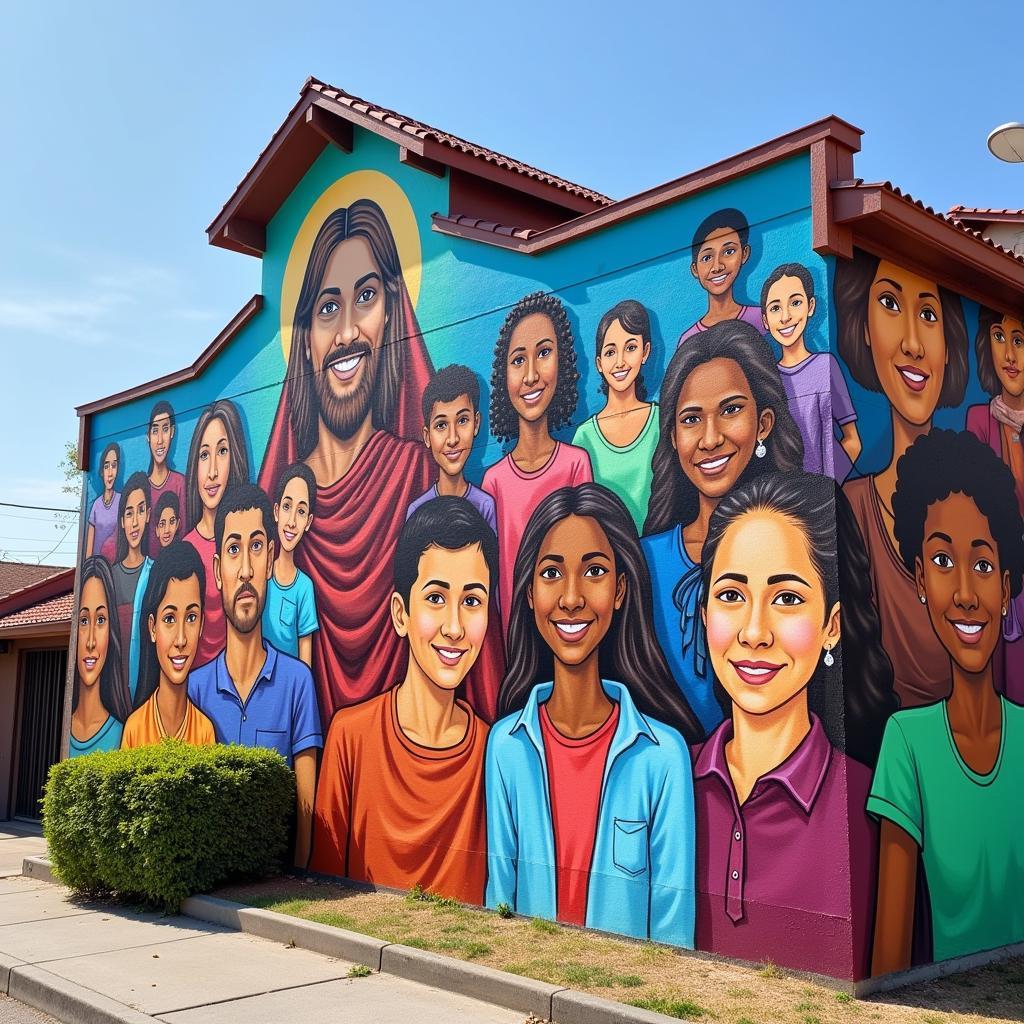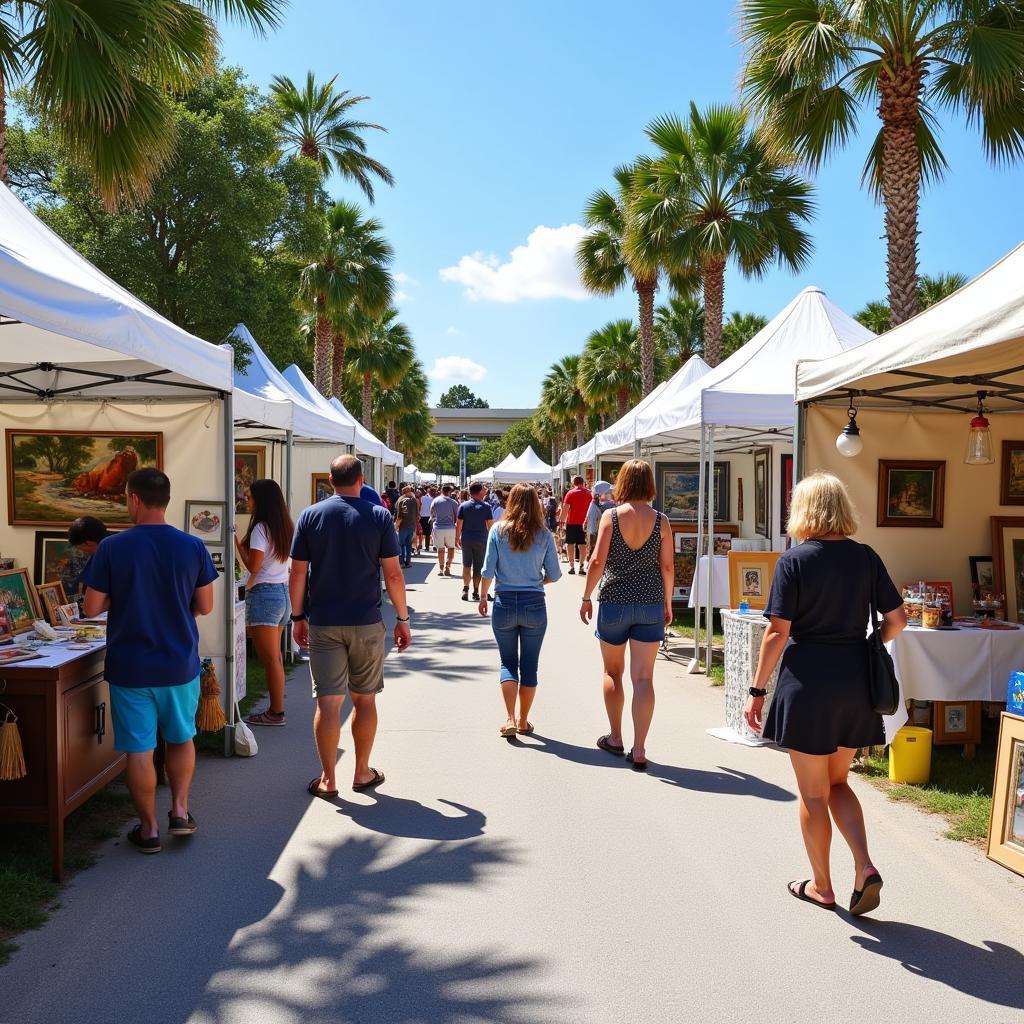Brown Jesus Art: Exploring the Controversy and Significance
Brown Jesus Art has sparked fervent debate and contemplation in equal measure. This evocative imagery, depicting Jesus Christ with brown skin, challenges traditional iconography and compels us to confront the complexities of representation, faith, and cultural identity.
 Brown Jesus Painting in Church
Brown Jesus Painting in Church
Challenging Eurocentric Norms
For centuries, Western art has predominantly portrayed Jesus with European features. This dominance of a singular image has permeated religious and cultural spheres, often overshadowing the diversity of the communities that Christianity encompasses. Brown Jesus art disrupts this established narrative, prompting us to question the pervasive influence of Eurocentrism in our understanding of sacred figures.
By reimagining Jesus with brown skin, artists and communities reclaim the narrative and reclaim ownership of their faith. This visual representation allows for a more relatable and inclusive depiction of Jesus, reflecting the multiethnic tapestry of Christianity across the globe.
A Reflection of Cultural Identity
 Brown Jesus Mural in Community Center
Brown Jesus Mural in Community Center
Brown Jesus art is often deeply intertwined with the cultural identities of the artists and communities it represents. In Latin America, Africa, and Asia, where colonial histories have left a lasting impact, depicting Jesus with brown skin becomes an act of reclaiming heritage and asserting cultural pride.
The artwork becomes a powerful symbol of resistance against cultural erasure, allowing communities to see themselves reflected in their faith. This visual representation fosters a sense of belonging and empowers individuals to connect with their spirituality in a way that resonates with their own lived experiences.
Beyond Skin Deep: Engaging in Dialogue
It’s important to acknowledge that the significance of Brown Jesus art extends beyond the visual representation itself. It serves as a catalyst for crucial conversations about race, representation, and the intersection of faith and social justice.
The varied reactions to Brown Jesus art, ranging from reverence to discomfort, highlight the need for open and honest dialogue. Engaging with these different perspectives allows us to confront our own biases, broaden our understanding of faith, and work towards a more inclusive and just society.
FAQs about Brown Jesus Art
1. What is the origin of Brown Jesus art?
While the exact origins are difficult to trace, Brown Jesus art has deep roots in various cultures and historical periods. Notably, movements for social justice and liberation, particularly in the 20th century, played a significant role in popularizing these depictions.
2. Is Brown Jesus art intended to replace traditional imagery?
The intention behind Brown Jesus art is not necessarily to replace existing imagery, but rather to offer an alternative perspective that challenges Eurocentric norms and celebrates the diversity of the Christian faith.
3. Why is Brown Jesus art considered controversial by some?
The controversy often stems from deeply ingrained perceptions of religious iconography and resistance to deviating from traditional depictions of Jesus.
Conclusion
Brown Jesus art stands as a powerful testament to the evolving nature of faith and representation. It challenges us to look beyond preconceived notions and embrace the richness and diversity that exists within Christianity. By fostering dialogue, understanding, and empathy, Brown Jesus art paves the way for a more inclusive and representative expression of faith.
For support with Online Art workshops or inquiries about Brown Jesus art, please contact us at Phone Number: 02462573573, Email: [email protected], or visit us at Savico Megamall, 7-9 Đ. Nguyễn Văn Linh, Gia Thụy, Long Biên, Hà Nội 10000, Việt Nam. Our dedicated customer service team is available 24/7 to assist you.



